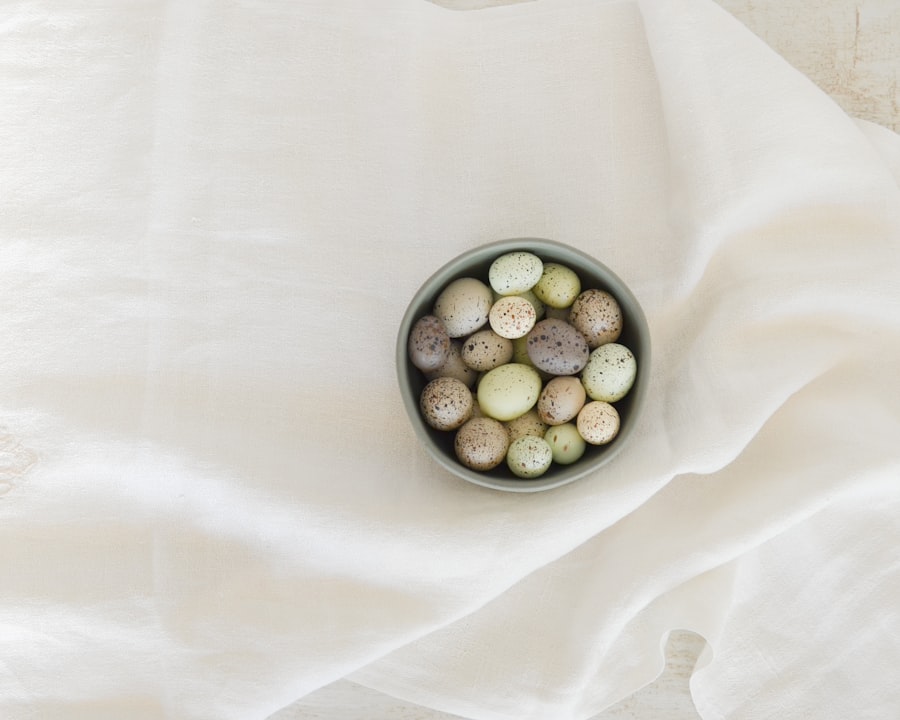Coturnix quail breeding is a fascinating and rewarding endeavor for many poultry enthusiasts. These small, hardy birds are known for their fast growth, high egg production, and delicious meat, making them a popular choice for backyard breeders and commercial operations alike. Breeding Coturnix quail can be a relatively simple process, but it requires careful attention to detail and a solid understanding of the birds’ needs and behaviors.
Coturnix quail, also known as Japanese quail, are native to East Asia and have been domesticated for thousands of years. They are small, ground-dwelling birds with a mottled brown and white plumage, and they are known for their gentle nature and relatively low maintenance requirements. In the wild, Coturnix quail are migratory birds that inhabit grasslands and agricultural areas, where they feed on seeds, insects, and small invertebrates. In captivity, they thrive in a variety of environments and are well-suited to both indoor and outdoor breeding setups.
Breeding Coturnix quail can be a highly rewarding experience, whether you are interested in raising them for meat, eggs, or simply as pets. With the right knowledge and care, these birds can provide a sustainable source of protein and entertainment for their keepers. In this article, we will explore the ins and outs of Coturnix quail breeding, from selecting breeding stock to caring for chicks and young quail, as well as breeding for desired traits and genetics.
Table of Contents
- 1 Selecting Breeding Stock
- 2 Breeding Environment and Housing
- 3 Breeding Behavior and Techniques
- 4 Incubation and Hatching
- 5 Caring for Chicks and Young Quail
- 6 Breeding for Desired Traits and Genetics
- 7 FAQs
- 7.1 What is coturnix quail breeding?
- 7.2 What are the basic requirements for coturnix quail breeding?
- 7.3 How long does it take for coturnix quail to reach breeding age?
- 7.4 How many eggs can a coturnix quail lay in a year?
- 7.5 What are some common breeding challenges with coturnix quail?
- 7.6 What are some tips for successful coturnix quail breeding?
Key Takeaways
- Coturnix quail breeding is a rewarding and relatively easy endeavor for those interested in raising these small game birds.
- When selecting breeding stock, it is important to choose healthy, disease-free birds with desirable traits such as size, color, and temperament.
- Providing a suitable breeding environment and housing is crucial for the success of the breeding program, including proper space, nesting areas, and temperature control.
- Understanding breeding behavior and techniques, such as mating rituals and egg collection, is essential for successful reproduction and hatching.
- Proper incubation and hatching techniques, including temperature and humidity control, are vital for the health and survival of quail chicks.
Selecting Breeding Stock
Selecting the right breeding stock is crucial for successful Coturnix quail breeding. When choosing birds for breeding, it is important to look for individuals that are healthy, vigorous, and free from genetic defects. Selecting breeding stock with desirable traits such as fast growth, high egg production, and good temperament can help improve the overall quality of your quail flock.
When selecting breeding stock, it is important to consider both the physical characteristics and the genetic background of the birds. Look for birds that are well-proportioned, with bright eyes, clean feathers, and a lively demeanor. Avoid birds that are overly aggressive or show signs of illness or injury. It is also important to consider the birds’ genetic background, as certain traits such as coloration, size, and egg production can be passed down from one generation to the next.
In addition to physical and genetic traits, it is also important to consider the birds’ age and reproductive history when selecting breeding stock. Younger birds are generally more fertile and have a longer breeding lifespan, while older birds may have reduced fertility and reproductive success. It is also important to consider the birds’ previous reproductive performance, as birds that have successfully raised healthy chicks in the past are more likely to be good breeding stock.
Breeding Environment and Housing
Creating the right breeding environment and housing setup is essential for successful Coturnix quail breeding. Quail are relatively small birds that require minimal space compared to other poultry species, making them well-suited to a variety of housing options. Whether you choose to raise your quail indoors or outdoors, it is important to provide them with a clean, safe, and comfortable environment that meets their specific needs.
Indoor housing options for Coturnix quail include cages, aviaries, or specially designed quail pens. These setups should provide adequate space for the birds to move around freely, as well as access to food and water at all times. The housing should also be well-ventilated and free from drafts, with plenty of natural light to promote healthy growth and reproduction.
Outdoor housing options for Coturnix quail include chicken coops, rabbit hutches, or custom-built quail shelters. These setups should provide protection from predators and the elements, as well as ample space for the birds to forage and exercise. Outdoor housing should also include access to shade and dust baths, as well as protection from extreme temperatures and inclement weather.
In addition to providing the right housing setup, it is important to consider the bedding and nesting materials for your quail breeding environment. Clean straw, wood shavings, or sand can be used as bedding material, while nesting boxes or trays filled with clean straw or shredded paper can provide a comfortable place for the birds to lay their eggs. Providing the right breeding environment and housing setup is essential for successful Coturnix quail breeding.
Breeding Behavior and Techniques
Understanding the breeding behavior and techniques of Coturnix quail is essential for successful reproduction and chick rearing. Quail are known for their prolific egg production and relatively short incubation period, making them an ideal choice for breeders looking to raise a sustainable source of protein. By understanding the natural breeding behavior of these birds and implementing the right breeding techniques, you can maximize your quail’s reproductive potential.
Coturnix quail are known for their monogamous mating behavior, with pairs forming strong bonds during the breeding season. Males will often perform elaborate courtship displays to attract females, including vocalizations, wing-fluttering, and head-bobbing. Once a pair has formed, they will engage in copulation multiple times throughout the day, with females laying eggs shortly after mating.
To encourage successful breeding behavior in your quail flock, it is important to provide them with the right environmental cues and stimuli. This can include providing a balanced diet rich in protein and essential nutrients, as well as access to clean water at all times. It is also important to provide the birds with adequate space for mating and nesting, as well as protection from disturbances or predators that could disrupt their reproductive behavior.
In addition to understanding the natural breeding behavior of Coturnix quail, it is also important to implement the right breeding techniques to maximize reproductive success. This can include using artificial lighting to simulate longer daylight hours during the breeding season, as well as providing supplemental heat or humidity during the incubation period. By understanding the breeding behavior and techniques of Coturnix quail, you can help ensure successful reproduction and chick rearing in your flock.
Incubation and Hatching
Incubation and hatching are critical stages in the Coturnix quail breeding process, requiring careful attention to temperature, humidity, and turning of the eggs. Quail eggs have a relatively short incubation period of 17-18 days, making them an ideal choice for breeders looking for a quick turnaround on their investment. By understanding the incubation process and implementing the right techniques, you can maximize your quail’s hatching success.
When incubating Coturnix quail eggs, it is important to maintain a consistent temperature of around 99-100 degrees Fahrenheit (37-38 degrees Celsius) throughout the entire incubation period. This can be achieved using a specialized incubator or broody hen, with regular monitoring of the temperature to ensure it remains within the optimal range. It is also important to maintain a consistent level of humidity of around 60-70% throughout the incubation period, which can be achieved by adding water to the incubator or using a wet bulb thermometer.
In addition to maintaining the right temperature and humidity levels during incubation, it is also important to turn the eggs regularly to ensure proper development. Quail eggs should be turned at least three times a day during the first 14 days of incubation, after which they should be left undisturbed until hatching. Turning the eggs helps prevent the embryo from sticking to the shell membrane and promotes even heat distribution throughout the egg.
Once the eggs have completed the incubation period, they will begin to hatch within 17-18 days of being laid. During this time, it is important to maintain a stable environment with minimal disturbances to ensure successful hatching. Newly hatched chicks will require time to dry off and fluff up before being moved to a brooder or rearing area. By understanding the incubation process and implementing the right techniques, you can maximize your quail’s hatching success.
Caring for Chicks and Young Quail

Caring for chicks and young quail requires careful attention to their nutritional needs, housing requirements, and socialization. Newly hatched quail chicks are delicate and require a warm, safe environment to thrive in their first few weeks of life. By understanding their specific care requirements and implementing the right techniques, you can help ensure healthy growth and development in your young quail flock.
Newly hatched quail chicks should be moved to a brooder or rearing area with access to clean bedding material, heat lamps or heating pads, and access to food and water at all times. The brooder should be kept at a consistent temperature of around 95-100 degrees Fahrenheit (35-38 degrees Celsius) during the first week of life, gradually decreasing by 5 degrees each week until they are fully feathered at around 6 weeks of age.
In addition to providing the right environmental conditions for young quail chicks, it is important to provide them with a balanced diet rich in protein and essential nutrients. Commercially available chick starter feed or game bird feed can provide the necessary nutrition for healthy growth and development. It is also important to provide access to clean water at all times, using shallow dishes or waterers that are easy for young chicks to access.
Socialization is also an important aspect of caring for young quail chicks, as they benefit from interaction with their peers from an early age. Providing ample space for chicks to move around freely and engage in natural behaviors such as scratching and dust bathing can help promote healthy development. By understanding their specific care requirements and implementing the right techniques, you can help ensure healthy growth and development in your young quail flock.
Breeding for Desired Traits and Genetics
Breeding for desired traits and genetics is an important aspect of Coturnix quail breeding for both commercial operations and backyard breeders alike. By selecting breeding stock with desirable traits such as fast growth, high egg production, and good temperament, you can help improve the overall quality of your quail flock over time. Understanding basic genetics principles can also help you achieve specific goals in your breeding program.
When breeding for desired traits in Coturnix quail, it is important to consider both phenotypic traits (physical characteristics) and genotypic traits (genetic makeup). Phenotypic traits such as coloration, size, egg production, and temperament can be visually assessed in individual birds and selected for based on their desirability. Genotypic traits such as gene inheritance patterns can be more complex but play a crucial role in determining which traits are passed down from one generation to the next.
Understanding basic genetics principles such as dominant/recessive traits, gene linkage, and inheritance patterns can help you achieve specific goals in your breeding program. For example, if you are looking to breed for a specific color variation in your quail flock, understanding which genes control coloration and how they are inherited can help you make informed breeding decisions. Similarly, if you are looking to improve egg production or growth rates in your flock, understanding which genes influence these traits can help you select breeding stock with desirable genetic backgrounds.
In addition to selecting breeding stock with desirable traits based on phenotypic and genotypic characteristics, it is also important to consider genetic diversity in your breeding program. Maintaining a diverse gene pool can help prevent inbreeding depression and promote overall health and vigor in your quail flock over time. By understanding basic genetics principles and selecting breeding stock with desirable traits based on both phenotypic and genotypic characteristics, you can help improve the overall quality of your Coturnix quail flock while achieving specific goals in your breeding program.
In conclusion, Coturnix quail breeding is a fascinating and rewarding endeavor that requires careful attention to detail and a solid understanding of the birds’ needs and behaviors. From selecting breeding stock with desirable traits to creating the right breeding environment and implementing successful breeding techniques, there are many factors that contribute to successful Coturnix quail breeding. By understanding basic genetics principles and selecting breeding stock with desirable traits based on both phenotypic and genotypic characteristics, you can help improve the overall quality of your quail flock while achieving specific goals in your breeding program. Whether you are interested in raising Coturnix quail for meat production, egg production or simply as pets, with the right knowledge and care these birds can provide a sustainable source of protein and entertainment for their keepers.
If you’re interested in learning more about coturnix quail breeding, you may also find our article on the mating season for turkeys to be informative. Understanding the breeding and mating behaviors of different poultry species can provide valuable insights for successful breeding practices. Check out the article here to expand your knowledge on poultry breeding.
FAQs
What is coturnix quail breeding?
Coturnix quail breeding refers to the process of raising and breeding coturnix quail for the purpose of producing offspring for meat or egg production.
What are the basic requirements for coturnix quail breeding?
Basic requirements for coturnix quail breeding include suitable housing, proper nutrition, access to clean water, and a breeding program that ensures genetic diversity and health.
How long does it take for coturnix quail to reach breeding age?
Coturnix quail typically reach breeding age at around 6-8 weeks old, depending on the specific breed and individual development.
How many eggs can a coturnix quail lay in a year?
Coturnix quail are prolific layers and can lay up to 300 eggs per year, depending on their genetics, diet, and environmental conditions.
What are some common breeding challenges with coturnix quail?
Common breeding challenges with coturnix quail include maintaining proper male to female ratios, preventing aggression and injury during mating, and ensuring optimal conditions for egg incubation and hatching.
What are some tips for successful coturnix quail breeding?
Some tips for successful coturnix quail breeding include providing a balanced diet, monitoring for signs of illness or stress, and implementing a breeding program that promotes genetic diversity and overall health of the quail population.
Meet Walter, the feathered-friend fanatic of Florida! Nestled in the sunshine state, Walter struts through life with his feathered companions, clucking his way to happiness. With a coop that’s fancier than a five-star hotel, he’s the Don Juan of the chicken world. When he’s not teaching his hens to do the cha-cha, you’ll find him in a heated debate with his prized rooster, Sir Clucks-a-Lot. Walter’s poultry passion is no yolk; he’s the sunny-side-up guy you never knew you needed in your flock of friends!







